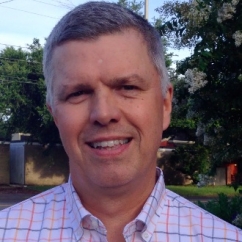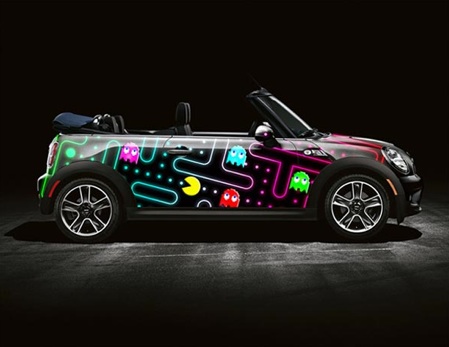Articles and News
View From The Bridge: You Can’t Fight Change, So Make It Work For You | July 02, 2014 (0 comments)

Lafayette, LA—Five years ago, at the height of the Great Recession, Matt Stuller and his executive team took a good look at the jewelry industry and realized that the economy was not the worst issue facing independent jewelers. Despite the fact that consumers nationwide from low-end to luxury collectively slammed their wallets shut, Stuller, chairman of his own eponymous company, realized that the bigger long-term issue was how and where consumers were going to buy fine jewelry when they did feel ready to shop again.
That was the beginning of the company’s Bridge conference program, which now brings groups of retailers down to Stuller headquarters for three days of seminars, networking, and discussion about the most critical ways both consumers and the industry are changing. The company hosts about a half-dozen Bridge conferences every year.
The Centurion Newsletter was a guest at the most recent Bridge event, held June 23-25. Key highlights from the learning sessions will be presented over the next few weeks. Here, we present an exclusive video interview with Stuller CEO Danny Clark, left, and a summary of his presentation about adapting to important changes in the retail landscape overall:
“The question isn’t whether you are able to change, but whether you can change fast enough,” Clark told the audience.
The reality is, your customers are buying jewelry other places, he said. Whether it’s Walmart on the low end or department stores and Costco on the high end, jewelry is ubiquitous. Consumers can and do buy it in lots of different places. Retailers make jokes about Amazon being “the devil,” but the reality is their customers may be buying jewelry on the site if it’s jewelry they can’t get in your store, he said.
“Why, in its planogram, did Costco put the jewelry counter up front?” asked Clark. “Because it creates value in customers’ eyes,” he said, alluding to Costco’s market position at the high end of the discount providers. Blue Nile’s website is “fantastic, till you get into it,” he continued. For those in the know, he said, the e-tailer’s jewelry is lightweight and cast in place, but jewelers can’t compete by playing defense.
“Don’t go there. Don’t talk about that. Instead, create a unique experience in your store that will have people coming in just for that. The great advantage we have is that jewelry is visual and emotional, and if you can’t give an experience that people rave about, that’s your fault,” he told the audience.
Indeed, Sarah Quinlan, senior vice president of market insights for MasterCard Advisors, recently said essentially the same thing in an exclusive interview with The Centurion Newsletter: even as luxury spending is shifting from goods to experiences, the emotional significance jewelry has puts it into the experience category, which is why fine jewelry sales are growing even as some other luxury products are struggling.
As in every discussion about modern retailing success, Clark used the Apple stores as an example of what works. Associates are approachable, knowledgeable, and truly enjoy what they’re doing, while customers are free to play with as many of the products as they want for as long as they like.
“How many people here have an identical iPhone?” he asked. As hands went up, he pointed out that the selection of photos, music, and apps on each person’s phone made it entirely unique and individual, even if the basic operation is the same. It’s the same for a Mini Cooper automobile—there are over one hundred combinations of paint, design, and trim available. And Nike’s website allows consumers to mix and match elements to customize their sneakers.

Portland-based artist Matt W. Moore creates customized graphics for a wide variety of consumer products. This Mini Cooper, covered in a graphic of the popular Pac-Man video game of the 1980s, is one example.
“It’s all about personalization and individuality. Facebook is all about marketing you,” he said.
To illustrate his point, he invited the audience to critique a jewelry store interior he showed. Where some saw the long, narrow store as dated and museum-like with wood cases and wall displays, others saw the wall cases as a way for customers to see product up close, thought the U-shaped layout made great use of small space, and the wood conveyed luxury and stability.
But knowing you need to adapt isn’t the same as being able to change effectively, said Clark. To make change work for you, first decide why you need to change, then what, who, and how to change.
For example, it’s important to shift from showcase selling to interactive selling, as that’s what consumers want today. What behaviors are going to drive that change? Those behaviors are what need to be implemented and measured to ensure they stick.
“If you don’t articulate the behavior you want, the employees may not do it. Don’t just offer generalities. Behavior is a physical action,” he said. Don’t just say you want the sales staff to engage customers more—tell them you want them to say hello and start a conversation within the first few seconds a customer comes in.
Assign and measure new behaviors according to the SMART scale: specific, measurable, attainable, realistic, and time-bound. For example, if the needed change is to go from showcase selling to interactive selling, a behavioral goal toward that change can be to show three CAD or customizable demonstrations per day.
Assess your staff on a matrix, he suggested: where does each fall in the realm of speed and capability to change? Some may adapt quickly and well, others may take more time or be unable or unwilling to change at all. And some may start out well but fall back to old ways without consistent reinforcement of the new behaviors.
Lastly, consider how to both identify and present the changes you need. There are three main ways to implement change, said Clark:
- One, the leader decides what to change, devises the plan behind closed doors, and orders the staff to do it;
- Two, the leader and a few trusted partners build a plan and present it to the team; or
- Three, the leader engages the full team in the solution process.
Each method has its time and place, said Clark. No one answer is right all the time, as each must fit the situation, but overall he believes that number three is the best option wherever feasible. People are more willing to do something if they’ve had a hand in deciding what it is. Otherwise, he said, “employees will do what they’re told, but put less of themselves into it.”
“This is no longer a world where the big will beat the small. Instead, the fast will beat the slow,” Clark concluded.
Watch the exclusive video interview with Clark here.







